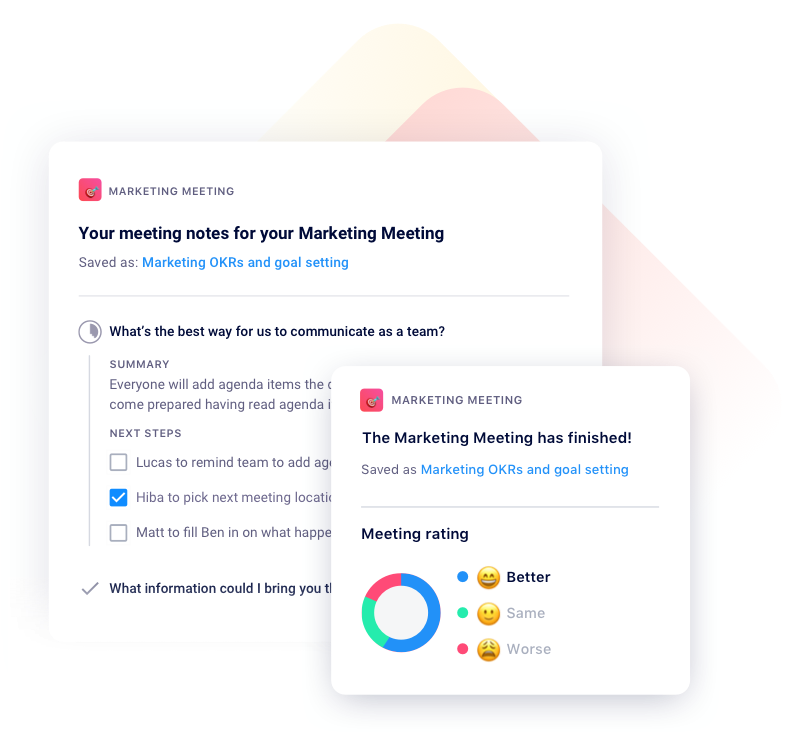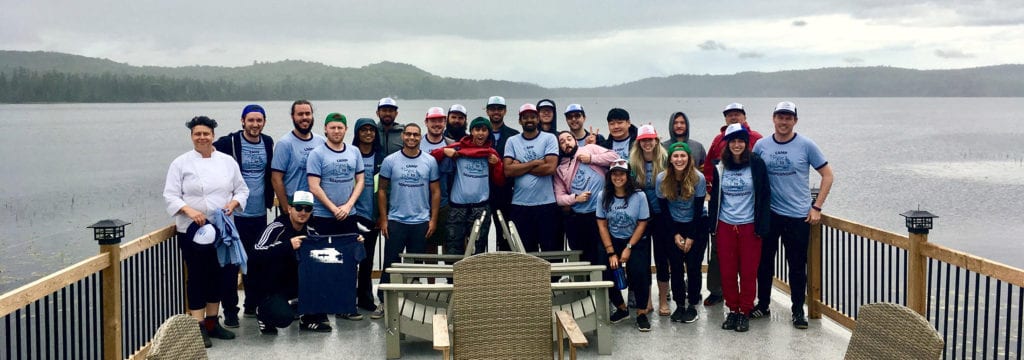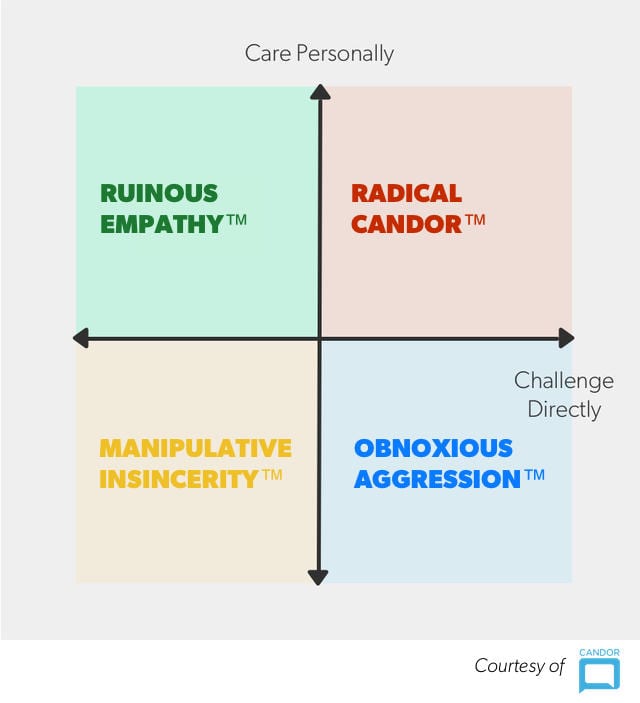10 Leadership habits that promote team collaboration
From feedback to effective communication, learn about 10 leadership habits every manager should embrace to foster a culture of collaboration on the team.
 Vartika Kashyap
Vartika Kashyap
Warning: Undefined array key "category" in /www/hypercontext_216/public/wp-content/themes/Soapbox/hype-files/sections/article/content.php on line 10
It’s no secret that collaboration contributes to how successful a team is (or isn’t). In fact, a Salesforce report found that 86% of employees surveyed felt that a lack of collaboration and ineffective communication were responsible for workplace failures. So, how can leaders ensure that collaboration is embedded in the culture of a team?
By developing leadership habits that foster a culture of collaboration on the team.
Collaboration starts with great leadership
Throughout my career, I quickly realized that every workplace had its own environment, culture, and unique way of doing things. Companies that focused on engagement, morale, and relationship building always thrived, and those that didn’t… Well, let’s just say growth was stagnant.
Moral of the story? Teams can have the most talented employees, but if they’re unable to collaborate and communicate effectively with one another, they can only achieve so much.
As leaders, it’s important to understand that when you put together a group of people who are aligned, communicative, and committed to the task at hand, you can achieve absolutely anything. That’s why it’s so important that leaders not only lead by example but build habits intrinsically and within the team that promotes a collaborative culture.
Why should leaders create a collaborative workplace?
A collaborative workplace is an inviting one. But, you want your workplace to be more than just warm and welcoming, you also want it to be functional and highly productive. Collaboration helps you achieve this.
In fact, there have been many studies focused on why collaboration is so important in the workplace. Some findings include:
- 97% of employees believed that a lack of alignment between a team impacts the outcomes of the project as a whole.
- While 75% of employers say that teamwork and collaboration are “very important”, only 18% of employees are evaluated on communication during performance reviews.
- 39% of surveyed employees believe that people in their own organization don’t collaborate enough.
This teaches us that not only is collaboration critical to the success of a team, but it’s also something that leaders lack focus on fostering in the team. As leaders, we need to promote collaboration on the team and that starts with embracing it ourselves first.
Embrace collaboration by developing these 10 leadership habits
Understanding collaboration means understanding the factors that give way to productivity at your workplace. Embrace this value and let it bleed through your system for easier team management and better results.
So to make an impact on the productivity and culture of your team, here are 10 leadership habits you should consider incorporating into your management style.
1. Be more available
Every quality you want to see in your team can only bloom once you adopt it yourself. So if you want to see a participative culture at your workplace, you must make yourself more available.
Give them your time, your words, and your advice. But, be careful to toe the line between being available and micromanaging.
By making the effort to be there for your team, you’ll actively promote a culture of helping and supporting each other, which is what collaboration is all about. Here are some ways you can be more involved with your team (without micromanaging):
- Communicate more: Share updates on the progress of tasks you’re working on, participate in brainstorming sessions, share insights you uncover, etc.
- Be more transparent: Set the tone of open and honest communication. All things considered, try to be as transparent as possible with the team, this will help build trust over time.
- Set expectations: Let your team know that it’s your job to be there for them. Whether they want to talk about strategy, challenges, or career goals, let them know you’ll be there to chat whenever they need it.
2. Make information available
Document, document, document. Make this the golden standard for your team. This will ensure that everyone is kept in the loop on big projects, decisions, and any other important conversations. Doing this also makes it easier to access historical information on why certain decisions were made or how past projects performed. Plus, making information available is a great way to promote transparency and build trust within the team, which are critical parts of a collaborative team.
Some ways you can make information more accessible to the team include:
- Share project details, including goals, scope, roles and responsibilities, and major milestones.
- Use public channels in your communication tool (I.e. Slack). Aim for the least amount of private messages possible.
- After every meeting, document decisions, next steps, and send out meeting minutes.

When everything is on the table, it becomes easier for them to work together in harmony.
3. Promote effective communication
Managing ProofHub, one thing became clear early on: communication is the foundation of collaboration. That’s why it’s so important to continuously improve the way the team communicates with one another.
Some ways to promote effective communication on the team include:
- Use a collaborative meeting agenda so that everyone can contribute to key meetings.
- Document and manage projects with a project management tool.
- Define workflows and processes using standard operating procedures when relevant.
- Practice active listening. For onsite teams, push for closed laptops during meetings. For remote teams, ask everyone to go into fullscreen mode.
4. Make recognition a priority
Collaboration works best when mixed with inspiration. Sharing recognition can bring the team closer together while also reinforcing the right behaviors across the team. So, as leaders, it’s important that we make employee recognition a priority.
Here are some of the best ways in which you can recognize the efforts of your employees and encourage them to give recognition as well:
- Announce the achievements of an employee or team publicly. You can do this by adding in shoutouts to your weekly team meeting agenda or sharing a note in your company’s communication tool.
- Recognize individuals privately during one-on-one meetings.
- Encourage the team to give one another recognition. After all, it shouldn’t just come from the top-down.
5. Foster an inclusive team culture
It is, after all, the job of the leader to mold the team’s culture. You should work towards adding inclusivity in your definition of this collaborative team culture. To promote inclusivity you can:
- Make psychological safety a priority.
- Empower people’s creativity by listening to their ideas.
- Enroll your team into seminars and workshops focused on diversity and inclusion in the workplace.
- Lead by example and show inclusive leadership
6. Promote small talk
It’s important that everyone on the team has the opportunity to get to know their teammates. That’s not going to happen when the only thing they discuss is how projects are moving along. Encouraging teammates to know each other as people first, coworkers second is incredibly powerful. When people are comfortable with one another it makes collaboration all that much easier to achieve.
Whether you start every meeting off with an ice breaker or engage in small talk with the team, it’s critical to find meaningful ways to promote conversations that aren’t about work. Not only will this build better relationships within the team, but it will also help you unlock your team’s full potential.
7. Encourage team engagement
A great way to encourage collaboration is to help the team blow off some steam while getting to know one another better with team-building activities. This helps create a bond that everyday work just can’t.
If you’re running company-wide or cross-functional team-building activities, set it up in a way that gives people the chance to interact with coworkers they wouldn’t normally communicate with.

Some team building activities you can do include:
- Running a trivia night (virtual or onsite!)
- Sign up for an intramural team (once it’s safe to do so again of course)
- Play small games like charades, two truths and a lie, or other low-effort party games
- Set a day aside and go for dinner as a team
Building rapport across the team and organization is very important for creating an environment that exudes collaboration.
8. Create a “talk and listen” culture
Running meetings such as brainstorming sessions is a great way to align the team on goals and strategy, gather the team’s input, and think of creative and innovative ways to push the needle. However, what makes these meetings truly effective is when the team is not only encouraged to participate, but also listens to the opinions and ideas. Doing this you promote a workplace that focuses on collaboration and understanding.
When it comes to the “talk and listen” culture, there are two areas to focus on:
Encourage people to talk:
For some, speaking up and sharing ideas comes naturally. However, that’s not the case for everyone (and that’s okay). So, it’s important that you encourage people to speak up and share their ideas, as well as create an environment where people feel safe to share. When it comes to encouraging people to speak up, here are a couple of ways you can do this:
- Make your employees feel comfortable enough by fostering a culture of psychological safety on the team. When everyone feels safe to share ideas with the team without fear of being ridiculed, people will be more encouraged to open up.
- Give the team the opportunity to share ideas before the meeting in a non-verbal medium. This can be as simple as adding an item to your meeting agenda and asking everyone to contribute a couple of ideas prior to the meeting.
Encourage people to listen:
Listening to the ideas of others is just as important as sharing your own. Here are a few ways that leaders can improve their listening skills:
- Don’t provide the answers all of the time. Sometimes it’s more helpful to guide your team towards the answer they’re searching for, allowing them to take control of the conversation.
- Listen to your team’s ideas and opinions, and acknowledge their input.
- Nod and respond, and use eye contact.
- Appreciate people for expressing themselves and bringing any issues or ideas to light.
9. Simplify the feedback sharing process
Feedback is so critical for any leader, both in how to give and receive it. For any leader, it’s important to understand that giving feedback is not just about pointing out a direct report’s mistakes. Instead, Radical Candor suggests that great employee feedback happens when:
- You care personally about the person you’re giving feedback to
- Your ability to be clear and direct

At ProofHub, we believe there is a system for giving feedback where we make sure to let the employee know how they’re doing. Here’s what we do:
- Make feedback sessions a regular thing. Quarterly feedback sessions, in my opinion, work great.
- For feedback, analyze the employee’s work starting with the date when the last session was held.
- Make 2 columns headed: *The Shortcomings* and *How To Improve* and start adding things to the lists.
- In the session, state what you expect from them with parallels to how they have been performing.
- Ask for their input so they can tell you how they think they can improve.
- Share your advice and any pointers on how you think they can improve.
- Give them time to talk about what changes they would like to see in the workplace that would help them perform better.
However, while this process is great, it shouldn’t be treated as an excuse to wait until the end of a quarter to share feedback. All leaders should continue to do this on a continuous basis, including during recurring one-on-one and team meetings.
10. Make team morale your priority
For me, morale has always come from a place of motivation and positivity. These are two very important qualities that a rich team culture should have. When people are motivated, they show up to work and actually try. A place with high morale helps people feel at ease, have more job satisfaction and, in terms of collaboration, creates a more encouraging environment for people to socialize and discuss work in a positive light. Thus I feel that, as leaders, we must:
- Raise morale by engaging in communication, collaboration, and sharing success stories.
- Make the team see that the success stories branch from teamwork, togetherness, and collaboration.
- Celebrate milestones and achievements and spread happiness around.
- Encourage the team to experiment and take risks.
- Show the team that you trust them.
- Engage in conversations that are constructive, and can help your team improve on every level.
Wrapping up
To sum up, all I’d like to say is that collaboration is not something leaders should overlook. Shying away from things like communication, team engagement, and transparency will not bring you more power over them, but rather, it will drive them away.
I hope that, if you take anything away from this article, it’s this: the power of “we” can help you achieve a lot more than the power of “me”. So, try to be more flexible and adopt all of the leadership habits mentioned above. Do that and collaboration will follow.

Vartika Kashyap is the CMO at ProofHub and has been one of LinkedIn’s Top Voices in 2018. She likes to write about productivity, team building, work culture, leadership, entrepreneurship among other things and contributing to a better workplace is what makes her click.
What you should do now
Next, here are some things you can do now that you've read this article:
- Our YouTube channel is full of tips on management skills and team building.
- Check out Spinach to see how it can help you run a high performing org.
- If you found this article helpful, please share it with others on Linkedin or X (Twitter)
